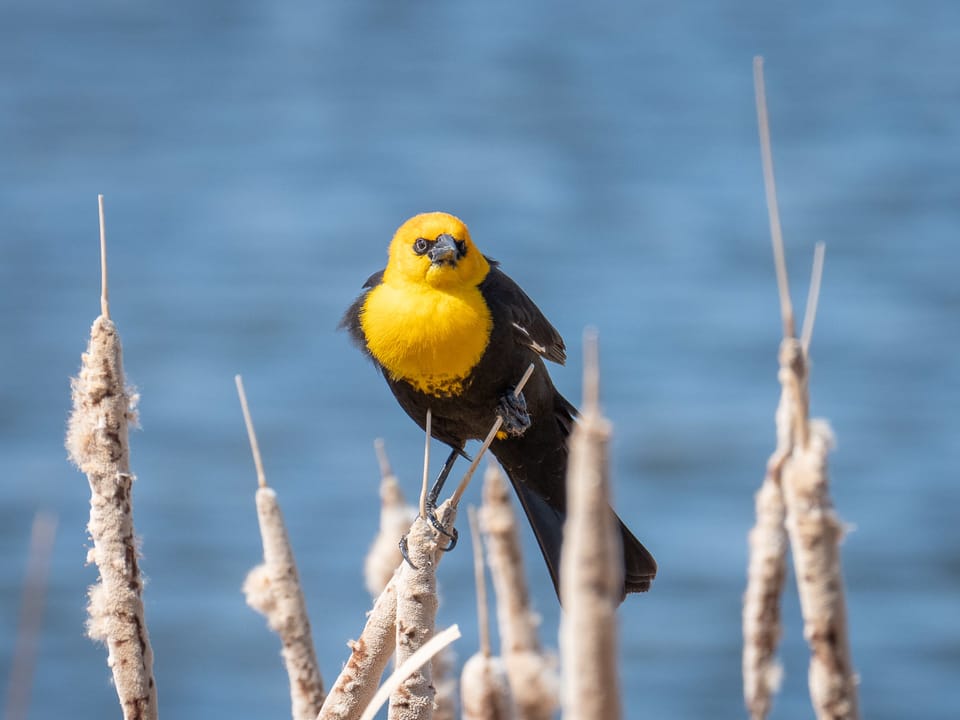EcoWest News, April 30, 2024

Welcome to EcoWest News, a weekly round-up of news and resources that you can put to use in addressing environmental issues and protecting the wild in your community.
Across the West
The Alberta Wilderness Association is concerned that the provincial government’s drought response prioritizes industry and irrigation while failing to allow for adequate water supply for healthy aquatic ecosystems. [AWA]
The Spoke n’ Loam urban forestry conference in Edmonton on June 21 will discuss tree-roosting bats, soil health and species selection, heritage trees, and the interconnection between trees, culture, and recovery. [Spoke n’ Loam]
BC’s St. Paul’s Hospital, scheduled to open in 2027, will be LEED-certified. It’s designed to meet future weather conditions (flood, heat), minimize its environmental impact, and promote greener commutes. [The Daily Scan]
The common eastern bumblebee, introduced as a greenhouse pollinator, is now the most common bee found in BC’s Lower Mainland and could endanger native bee species. [UBC]
A group of University of Manitoba students have used cattails to come up with an alternative to peat moss. It will be on sale in Manitoba this spring through Typha Co. [CTV]
Around the World
A Nobel-prize winning economist is calling for a climate tax on global corporations and billionaires to be sent directly to countries most impacted by the climate crisis. [Heated]
Small town volunteers transformed a dumping ground into a nature trail and outdoor classroom with a frog pond, native plants, and wildlife – not to mention a safe route for children walking between the school and the library. [Ecological Citizen]
Urban connectivity for rare species can be improved by using a multi-species, multi-site approach and by ensuring rural-urban connectivity. [Conservation Corridor]
In the Trees
Limber pine are botanical rebels, striving to grow on rocky, dry, and exposed slopes. They stabilize the soil, contribute to water supply, and are a food source for many animals. Find out more on the Waterton Biosphere Region website or watch an 8-minute video.
Combining western science with Indigenous knowledge can improve forest management by viewing forests as dynamic not static and taking a place-based, situational approach. [Columbia Insight]
Wood pellet exports have doubled in the last 10 years with Japan’s new reliance on biomass as a fuel source representing a majority of the surge and putting considerable pressure on BC’s forests. 6 recommendations to ensure forests are not being cut down just to be burned. [Policy Note]
At Sea
Bottom trawling is responsible for a quarter of all wild-caught seafood globally and has been linked to overfishing, habitat damage, and bycatch. Debate continues as to whether a ban on bottom trawling would impact food security or improve marine biodiversity and carbon emissions. [Dialogue Earth]
The shipping industry is embracing greener fuels and there are other ways they could slash emissions. “If shipping can transform itself, it will be harder for other industries, such as aviation, to delay their own green transition.” [Hakai Magazine]
An Indigenous-led marine protected area off BC's central coast has been awarded Blue Park status. The Kitasoo Xai’xais Nation is working to create more marine protected areas and is in talks with the federal/provincial governments to recognize the area. [The Narwhal]
Nature’s Wonders
Ghost (leucistic) magpies have white-coloured chests and grey wings instead of the standard black and white. They’re more common in larger cities where they’re exposed to contaminants that can cause genetic mutations and damage melanin cells. [CBC]
iPhone’s built-in AI is so good that you can use it to quickly identify plants, flowers, or birds. Take a photo, open it in Photos, and swipe up (or tap the Info button or choose Look Up in the Safari options). Tap the icon for additional information. [Apple]
Photo credit: https://www.flickr.com/photos/apmckinlay/49901592162
EcoFriendly West informs and encourages initiatives that support Western Canada’s natural environment through its online publication and the Nature Companion website/app. Like us on Facebook, follow us on Twitter or Mastodon, or subscribe by email.

Member discussion